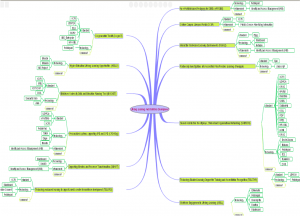I recently collated the information we have on all the projects working on the JISC Lifelong Learning and Workforce development (LLLWFD) programme in advance of their last programme meeting at the end of Jan (the programme ends March 2011.) I was looking at:
* Technologies used across the programme
* Standards used across the programme
* Capturing this information in our ‘PROD’ database which we use in all our current JISC Programme Support activities
What is PROD?
PROD is a “directory and monitoring tool for JISC funded projects. It lets you search for and quickly gather information about any of the projects in the system” and as part of our support of various JISC programmes, CETIS staff update it based on information in their reports and conversations with projects.
All Lifelong Learning and Workforce Development projects are featured there. Rather than reel off a list of technologies and standards which can be unsurprisingly quite dull, I looked at some of the visualisation tools which colleagues have been using. These help people have a quick overview and see any weighting of particular technologies etc.
Wordle
A wordle showing a quick snapshot overview of the main technologies in use across the programme:
Mindmap
A mindmap showing all the standards and technologies used by each project, further expansion includes all the comments detailed in PROD (please click on link to access the actual mindmap, below is just an image of the mindmap)

Bubblegram
A bubblegram provides and overview of different tools, where the circles are larger then it highlights that particular technology is used b more than one project.
What this means…
No major surprises in the use of technologies or standards but a really interesting spread. It also echoes the technologies and standards in use across other programmes that have been reported.
Overall, it could be said that the programme is not hugely ‘technical’ in application but instead focusses on processes, staff, and employer issues, which are often the key to success rather than the specific technology of choice. Many interesting issues have arisen and challenges which will persist well beyond the programme, such as accreditation of prior learning, competencies, identity and access management. These all have their own particular nuances when viewed from the various perspectives or employer, institution and learner. There is a great deal of synthesis and reflection coming out of the ‘Developing themes’ on the SSBR blog and it will be interesting to see the final reports to gain a deeper insight across the whole programme.


